I don’t understand it, you think to yourself. I’ve been doing all the right things–extra warm-ups and drills, jogging in place, resisting the urge to hit full power the first ten minutes on the court, so I’m well prepared for the demands of spring tennis, yet my heel still hurts. What am I not doing right?
Your approach to training is sound, but things happen despite your best efforts at prevention. One is heel pain, largely tied to overuse, so if you’ve been training hard and have been an avid player, your heel is speaking up!
Heel pain causes a sharp, burning pain in the bottom of your heel with each step you take. You may notice the pain as soon as your heel touches the ground, sometimes with the first steps you take in the morning. Besides overuse, another cause is if you suddenly become active after a prolonged period of inactivity or you haven’t sufficiently trained for a rigorous workout. You may have played enough during the winter months to maintain your own lower level of conditioning. But with the onset of a busy spring playing schedule, your feet may not be quite ready. The third cause of heel pain is poor alignment of the foot, which means increased stress in the heel during any activity. Simply put, your foot has a structural abnormality that doesn’t allow normal shock absorption. An example is flat feet, meaning your arch is flat and causes an extended stretch of the plantar fascia ligaments on the bottom of your feet.
Help is on the Way
Heel pain rarely subsides without professional care. It tends to increase in intensity and duration and most likely the heel becomes inflamed. Do not wait more than a few days to see your podiatrist. Otherwise, you will develop a chronic (ongoing) problem in the soft tissue of the heel and have increased stress in the heel bone itself.
As soon as you notice the pain, you may consider and begin ice massage after the activity. Simply place a small paper drinking cup with water in your freezer. After sports take the cup with the frozen water and rub it along the surface where the pain is located. As your foot adjusts to the coldness the pain will lessen. After 5 to 7 minutes simply throw the cup away. Avoid vigorous activity until you see your podiatrist. It may be suggested to try a course of anti-inflammatory medicines as well.
If your podiatrist sees a pronounced structural abnormality, he/she will fit you for orthoses (also called orthotics), custom-designed foot supports placed inside the shoes to add balance, support, and bio-mechanical control to your foot. Your podiatrist may strap your foot to temporarily improve its position while your orthotics are being made. It takes about 30 days before you receive your custom orthotics. Keep in mind that there is no comparison between over-the-counter orthotics and those fit by your podiatrist so beware. You’re serious about tennis so you need to be equally conscientious about the care you give your feet. Some players may consider an off-the-shelf product initially, if this helps fine, if not then you may want to move up to the customized type.
With the advent of a hectic spring and summer playing schedule, keep the following in mind: as the warmth and humidity in the air increase, feet tend to swell, making all shoes fit snugly. Tight shoes can aggravate existing bunions and callouses. Warmer weather also affects hammertoes, bunions, and heel spurs, especially for those with arthritis. So what can you do? Pamper your feet as much as possible!
Pamper your feet in the Summer
Summertime means your feet are on call more than ever. If you’re traveling to tournaments you’ll walk more. Follow these other tips too:
• Unless you’re at the beach, resist the urge to go barefoot. Walking shoeless exposes
your feet to contagious foot fungus.
• If you’re in the car for several hours en route to a match, do figure eight to minimize stiffness in the ankle joints.
• To improve circulation, especially while in a vehicle, draw your knees to your chest, resting your heels on the front edge of the seat. Gently flex the ankle joints by pulling your feet upward while allowing your heels to press into the edge of the seat.
• Don’t take car snoozes with your legs crossed unless you like waking up to pins and needles!
Keep your feet happy and safe at all times and they’ll do their job on and off the court.
Simon B. Small DPM, FACFS, FAAPSM
Medical Editor Tennis Life,
Podiatric sports medicine specialist

